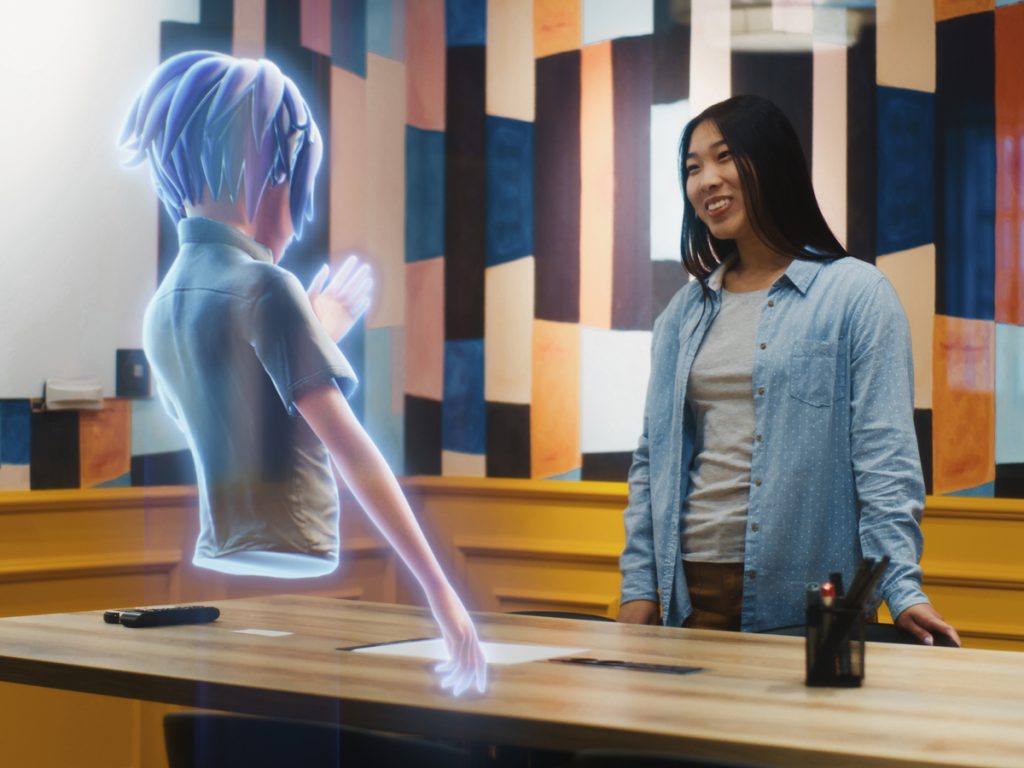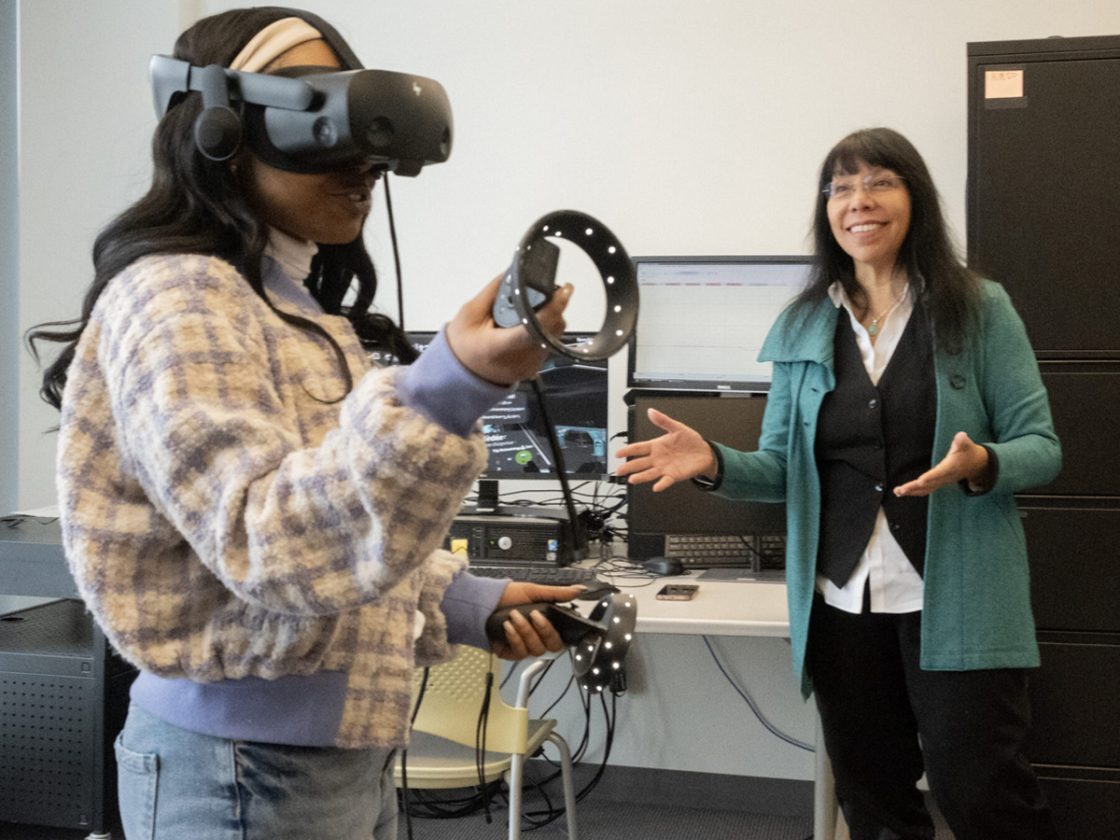How Much Do We Trust Virtual Influencers?
Your favorite social media influencer might not be human—and you probably can’t tell the difference.
As virtual avatars flood Instagram and TikTok, new research reveals a fascinating truth: We’re more likely to trust and follow these artificial personalities when they blur the line between pixels and people.
T. Makana Chock, David J. Levidow Endowed Professor of communications in the S.I. Newhouse School of Public Communications and director of the Extended Reality Lab, discovered that the secret to a virtual influencer’s success lies in how convincingly human they appear.
Students in Chock’s Extended Reality Lab have studied why virtual influencers on Instagram who are not real people have gained millions of followers and examined what psychological factors drive this trend.

Through experiments and surveys, these students analyzed what makes virtual influencers more authentic, which populations are more likely to trust them and whether there are particular topics where they have more credibility.
“A key factor in the credibility and appeal of influencers, both real and virtual, is their perceived authenticity. What’s considered authentic, however, may vary depending upon culture, context, consistency and audience characteristics,” Chock says. “Context is also important. An avatar that is effective in selling fashion for tweens may not be credible as an online banking assistant.”
As the influencer becomes less distinguishable from a human, our emotions become more positive, meaning we’re more likely to trust the message being delivered by a presence that resembles a human than one that has cartoonish features.
Virtual Avatars Explained
At Newhouse, Chock teaches classes at the graduate level on Theories and Research on Extended Reality. At the undergraduate level, she teaches Media and Society, which includes various aspects of social media and how artificial intelligence (AJ) is impacting social media.
“We’re trying to predict what the communications world is going to look like for our graduates, but generative AI is moving so fast when it comes to its impact, integration and use in advertising,” Chock says.
Computer-generated characters are designed to look like real or fictitious people. Some possess more humanlike features than others, but their purpose, Chock says, is to engage with audiences and users online, on social media and on other virtual platforms.
These virtual avatars are either controlled by humans or through AI, and their actions can be managed by either individual creators or companies. What makes virtual influencers useful, Chock says, is that they:
- are easily controllable and brandable, which limits their unpredictable behavior or penchant for controversies
- can adopt any look, personality or role
- can be used across campaigns without aging or changing personas
- can cross languages, cultures and time zones
With millions of Americans heading online for their holiday shopping, chances are good you will come across a virtual influencer hoping to sell you a product.

Trusting in Virtual Influencers
Even when we know we’re dealing with a virtual avatar, Chock says we still apply real-world social rules that are guided by the psychological foundations of our relationships.
As an avatar takes on more visual, verbal and textual human characteristics, we’re more likely to feel engaged, with higher authenticity, credibility, relatability and trust, especially when the avatar makes eye contact and displays emotions to the user.
“People are likely to treat virtual influencers as social entities, responding naturally to them. The inclusion of social cues, interactivity and responsiveness increases our likelihood of responding to the avatar as a human,” Chock says.
Factors that can erode trust include inappropriate interactivity, inconsistent and unresponsive communications, a lack of transparency about their virtual nature, and actions that aren’t socially appropriate.

When Machines Are More Trustworthy Than Humans
There is another side that Chock’s student researchers have explored, called the machine heuristic: a mental bias where people assume machines are more secure, trustworthy, objective and accurate than their human counterparts. Machines can appear to be free from the emotions and biases created by people, even when those claims are not necessarily true.
“Although a number of studies have found that human influencers are more effective than virtual influencers, we found that for people who have a high belief in the machine heuristic, virtual influencers were rated as more influential than human influencers,” Chock says of the Extended Reality Lab’s findings.
While people’s relatability tends to increase as the object becomes more humanlike, Chock says that’s only true to a point.
“If an avatar triggers an uncanny valley effect where it’s almost but not quite human, that can create a sense of eeriness and repulsion,” Chock says, “and it can make us lose trust, feel deceived and lose interest in further interactions with these virtual influencers.”
Ultimately, Chock says when users enjoy meaningful interactions with virtual influencers, it helps them feel more control and influence over their digital environments. Those positive responses lead to higher engagement and increased credibility, trust and authenticity.



